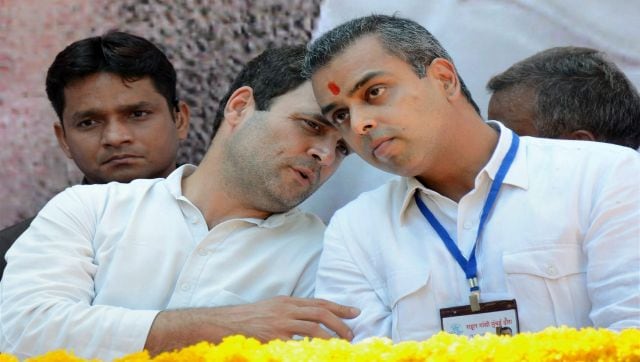In every society, every civilisation and every culture, there is something that is held unique, sacred and inviolable by time and space. It remains part of faith and belief of that culture, society and civilisation. Same is the case in the context of cow in Indian civilisation and Hindu society. In India all life including insects, ants, all animals and plants has a sanctity of its own and the soul of each living being migrates from one life form to another until the individual soul, after countless births and rebirths get absorbed into the ultimate cosmic or divine form.
Of all beings, the cow is considered in India as the most sacred, auspicious and sanctified. This sense of unique sacredness of the cow is expressed in the works of ancient Indian literature — right from Vedas to folklore. Since the defeat of Indians in the first war of Independence in 1857 a new school of interpretations of the Vedic literature was started by the British and European scholars. It led to the outright denigration of the ancient Indian social system, knowledge system, literature and the entire civilisational achievements.
It was not that a cow was not killed before the advent of the British but it was done mainly by the ruling class to hurt the Hindu religious feelings. Cow meat has never been a part of general food. But it started becoming so after the British started coming to India in large numbers. In order to justify the beef-eating, the British started the canard, later propagated by Marxist historians that Hindus have also been eating cow meat right from Rig Vedic times. Some Marxist historians claim that the Rig Veda actually provides evidence of beef-eating. While it is true that animals were sacrificed to honour gods in the Vedic era, this was usually the male ox, buffalo or goat. The sacrifice is a special community event and not an act of individual consumerist eating.
Marxist historians call Indra a tippler (a cheeky term for drunkard), with a special liking for the flesh of bulls and even provided references from the Rig Veda. But if we look at the original Sanskrit text of the references (RV. V.29.7a&b), along with the translation by the British Sanskritist, HH Wilson, based on the Bhasya of Sayanacharya, we find that both verses speak clearly of buffaloes (mahisha), and not bulls. Similarly, hymns RV.VI.17.11 and Rv.VIII.12.8 mention buffaloes (mahishamn). In RV.X.27.2 and X.28.3 we find the bull (vrishabham); while X.86.14 speaks of large bulls (ukshano).
Obviously, such historians have engaged themselves in crude genetic engineering to transform buffaloes (an entirely different species!) into cows, as well as bulls into cows.
From Rig Veda and Atharva Veda we know that meat of a few domestic animals like sheep, goat, buffalo, bull, ox, male calf, etc, were consumed but not cow. Cow was held sacred all through. The Rig Veda refers to the cow as being “aghnya” (not to be killed or injured) at least at 17 places. The Vedic texts prescribe death or banishment from the kingdom to those who kill or injure the cow. Rig Veda (10.87.16) clearly lays down that “The evil person who kills or eats the meat of horse or a cow deserves to be executed.” The fact, however, is that throughout the Vedas the cow is called “aghnya” i.e. not to be killed. According to “An Encyclopedic Dictionary of Sanskrit on Historical Principles” (Vol. I, Deccan College, Pune), “aghnya” means “not to be killed or violated” and is used for cows and for waters in the presence of which oaths were taken.
The Rig Veda and Sama Veda call the cow “aghnya” and “Aditi”, i.e. not to be injured/killed (RV.1-64-27; 5-83-8; 7-68-9; 1-164-40; 8-69-2; 9-1-9; 9-93-3; 10-6-11; 10-87-16). They extol the cow as the one that cannot be killed, that cannot be injured; whose milk purifies the mind and keeps it free from sin. Verse RV.10-87-16 prescribes severe punishment for the person who kills a cow. The Atharva Veda recommends beheading (8-3-16) for such a crime; the Rig Veda advocates expulsion from the kingdom (8-101-15).
The Atharva Veda clarifies the confusion of Vedic words and tells that in the Vedic Samhita the names of the materials used for actual fire ceremony in yajnas are sometimes named as the names of an animal. For example, ‘rice’ is named as ‘cow’ and ‘sesame’ is named as ‘calf’. It only means rice and sesame and those who know the Vedic grammar, Vedic Morphology and Vedic yajna know this. In the English language there are expressions like “sweet meat” and “meat of Hazel”. In reality, is there any meat that tastes sweet? Is there any meat in hazelnuts"? Symbolism cannot be converted into literalism. That is the rule of language grammar.
The rule of the Vedas that a cow is Aghnya has been reiterated again and again in Sanskrit literature. The Mahabharata (15.39) says, “The one who himself doesn’t eat meat but even if he gives his consent to eat meat or kill animals, he becomes equally sinful as them”. The meat eaters who kill an animal in the name of yajna or tell that it is a requirement of the yanja is a sinner and he will go to hell (15.43). “The one who brings an animal to be killed, the one who buys the animal to be killed, the one who kills the animal, and the one who sells, buys, cooks and eats the meat are all sinners (15.45).” This shows that the Vedic yajnas did not involve any animal sacrifice.
A few words about the word ‘goghna’ the interpretation of which has added confusion. It is due to the Vachaspatyam compiled by Taranath Bandyopadhyay. It may be mentioned that this Sanskrit dictionary of Taranath was commissioned by the East India Company in order to provide legitimacy to the writings of scholars like Max Muller, RTH Griffith and others. In view of his poor financial conditions and a lure of the payment of Rs 10,000 in those days, 1886, (today, almost about Rs 30 lakh or even more), Taranath misinterpreted certain crucial words in the direction of the scholars working for East India Company.
“Goghna” is one such word. Taranath interpreted it as “the killer of a cow” ignoring the meaning given by 8th century B.C. grammarian, Panini. Panini explained the meaning of this word as “the donee guest who receives a cow.” By changing the meaning, Taranath imposed the suggestive meaning on Hindus that they ate cows, in order to provide legitimacy to those who were and are eating cows. There is no reason, whatsoever, to accept Taranath’s interpretation of “goghna” in place of the meaning given by Panini, unless someone proves that Taranath of the late 19th century was closer in his understanding of Vedic Sanskrit and was greater Sanskrit scholar than Panini. Taranath did precisely the same with the word ‘Ashwamedha’. It is wrong to think that the Ashwamedha horse was meant for killing and eating at the end of yajna.
It is important to differentiate between the meat of any cattle and that of the cow, exactly the way not every woman is one’s mother and not every man is one’s father. We have well defined relationships with each other in the society. A cow was clearly given a special status — that of aghnya — in Hindu society, which means that it cannot be injured or killed. The Atharva Veda lays down “death penalty to those who injure or kill cows.”
Even as late as 4th century BC Kautilya put a complete ban on the killing of cows. Kautilya (Kaut.II.26.10-11; II.29.16) clearly lays down: “The calf, the bull, and the milch-cow among these animals are not to be killed. For one killing (them, there shall be) a fine of fifty panas, also for (one) torturing (them) to death. He who himself kills (an animal) or incites another to kill or steal shall be executed.”
Hence, it seems unlikely that the cow would be slaughtered to entertain guests, as claimed by Marxist historians. But before coming to any conclusion, the archaeological evidence should also be examined. Archaeologists have excavated bones of cattle in a huge quantity, “cattle” is a collective noun that includes the cow, bull, buffalo, nilgai and all other bovine animals. Nowhere in the world can experts differentiate between the bones of cows and other cattle recovered from excavations.
The writer is a well-known historian. Views expressed are personal.
Read all the Latest News, Trending News, Cricket News, Bollywood News,
India News and Entertainment News here. Follow us on Facebook, Twitter and Instagram.
February 18, 2022 at 05:24PM









No comments:
Post a Comment